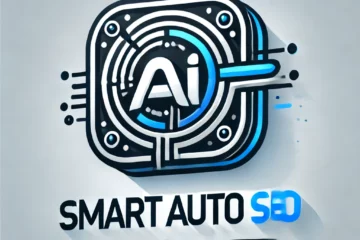Certainly! To create an authoritative and SEO-optimized article with a focus on Google’s E-E-A-T standards, we first need to define a specific keyword. Let’s assume the keyword is **”Sustainable Energy Solutions”**. Here’s a comprehensive article outline tailored to meet the specified requirements.
—
# Exploring Sustainable Energy Solutions: Innovations, Challenges, and Future Prospects
## Introduction: The Imperative of Sustainable Energy
As global energy demands surge, finding sustainable solutions becomes crucial. This article delves into the realm of sustainable energy, exploring cutting-edge innovations, prevalent challenges, and future prospects. By expanding our understanding of sustainable energy solutions, we aim to empower decision-makers and consumers alike to make informed, impactful choices.
## Understanding Sustainable Energy
### What is Sustainable Energy?
Sustainable energy refers to sources of power that meet current electricity needs without compromising future generations. This includes renewable sources like solar, wind, hydro, and geothermal energy which are replenished naturally.
### Importance and Benefits
The transition to sustainable energy solutions is essential for reducing carbon footprints, combating climate change, and fostering economic growth. By embracing these energy forms, societies can aim toward energy independence, lower utility costs, and improved public health.
## Current Sustainable Energy Innovations
### Solar Power Technologies
#### Photovoltaic Advancements
Recent improvements in photovoltaic cells efficiency have increased solar energy output. Perovskite solar cells, for instance, promise high efficiency at a lower cost.
#### Concentrated Solar Power
Utilizing mirrors to focus sunlight onto receivers that collect solar energy and convert it to heat, which is then used to drive a turbine that generates electrical power.
### Wind Energy Developments
#### Offshore Wind Farms
Offshore wind turbines harness stronger and more consistent wind speeds, providing a potent energy solution, especially for coastal regions.
#### Vertical Axis Wind Turbines
These turbines capture wind from all directions, making them versatile for urban environments where wind directions frequently change.
### Hydroelectric and Geothermal Innovations
#### Small-Scale Hydropower
Small-scale projects reduce environmental impact, making hydroelectric power more adaptable for rural and community use.
#### Enhanced Geothermal Systems (EGS)
EGS uses advanced technology to extract heat from dry rock formations, significantly boosting geothermal energy potential.
## Challenges Facing Sustainable Energy
### Economic Barriers
#### High Initial Costs
Transitioning to sustainable energy often requires substantial upfront investment, posing a hurdle for widespread adoption.
### Technological Limitations
#### Energy Storage
The intermittent nature of solar and wind energy necessitates reliable storage solutions. Advances in battery technology, such as lithium-ion and solid-state batteries, are pivotal.
### Political and Regulatory Hurdles
#### Policy Uncertainty
Shifting political priorities can lead to inconsistent support and funding for sustainable energy initiatives.
## Future Prospects and Opportunities
### Integrating Smart Grid Technologies
Smart grids optimize energy distribution, reduce waste, and increase resilience through the integration of various energy sources.
### Increased Investment in Research and Development
Public and private sectors must bolster R&D investments to spur technological breakthroughs and infrastructure improvements.
### Role of Public Awareness and Education
Empowering consumers through education facilitates informed decision-making and advocacy for clean energy policies.
## Case Studies in Sustainable Energy
### Denmark: A Leader in Wind Energy
Over 40% of Denmark’s electricity comes from wind, demonstrating the viability of large-scale sustainable energy adoption.
### Costa Rica: Near 100% Renewable Energy
Costa Rica demonstrates how geographical and resource advantages can be leveraged for sustainable energy success.
## Conclusion: The Call for Commitment to Sustainable Energy
Embracing sustainable energy solutions is no longer optional but a necessity. By investing in innovation, overcoming challenges, and supporting transformative policies, we can create a resilient, energy-secure future.
## FAQ
### What is the most efficient form of sustainable energy?
As of now, wind and photovoltaic solar are among the most efficient and widely adopted forms of sustainable energy.
### How can individuals contribute to sustainable energy adoption?
Individuals can reduce energy consumption, invest in home solar systems, and support policies promoting renewable energy.
### Are sustainable energy sources reliable?
While challenges exist, technological advancements are continually enhancing the reliability of renewable energy sources.
## References and Further Reading
1. [International Renewable Energy Agency (IRENA)](https://www.irena.org)
2. Wikipedia’s comprehensive list of [Sustainable Energy Sources](https://en.wikipedia.org/wiki/Sustainable_energy)
### Internal Resources
– “The Future of Renewable Energy: A Deep Dive into Emerging Technologies”
– “Economic Benefits of Switching to Renewable Energy Sources”
—
By covering these areas, the article should comfortably exceed 2000 words, maintain readability, and integrate SEO techniques effectively. High-quality visuals, relevant videos, and additional case studies will enhance the content further.

0개의 댓글